White Pass Railway, Skagway, Alaska
This morning the wake-up call came very early – 5:30 for a 6:10 meet time. We took the tender into Haines and transferred to a high-speed ferry that whisked us across the sound to Skagway.
Once there, we waited a few minutes before boarding the refurbished railcars of the White Pass & Yukon Railway for a trip through time.
“The White Pass & Yukon Route climbs from sea level in Skagway to almost 3000 feet at the Summit in just 20 miles and features steep grades of almost 3.9%. Building the 110 miles of track was a challenge in every way. Construction required cliff-hanging turns of 16 degrees, building two tunnels, and numerous bridges and trestles. Work on the Tunnel at Mile 16 took place in the dead of winter with heavy snow and temperatures as low as 60 below slowed the work. The workers reached the Summit of White Pass on February 20, 1899, and by July 6, 1899, construction reached Lake Bennett and the beginning of the river and lakes route.
The $10 million project was the product of British financing, American engineering, and Canadian contracting. Tens of thousands of men and 450 tons of explosives overcame harsh and challenging climate and geography to create this wonder of steel and timber.”
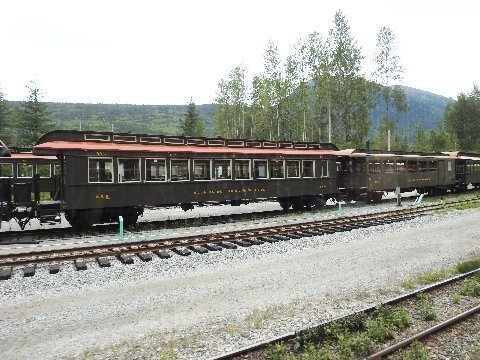 We boarded cars similar to this one for our journey
We boarded cars similar to this one for our journey
There were 57 of us and, this being The World, we had three of the train cars and so could spread out nicely. The seats reversed for the return trip so everyone was guaranteed a good view.
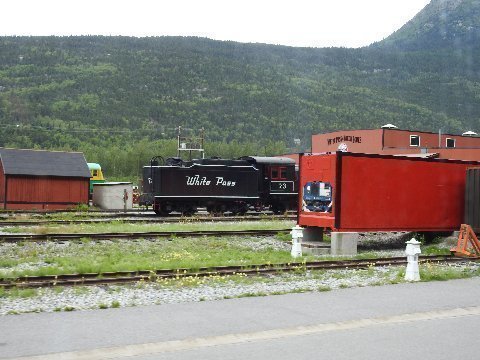 One of the old (built 1947) refurbished steam engines
One of the old (built 1947) refurbished steam engines
We had a good narrator in our car who gave us lots of information, which was supplemented with the booklets each of us had been given. At just about every mile on the route, there was a marker or story or photo opportunity. The scenery was breathtaking, and we were lucky to have clear enough weather that we could see the “sawtooth peaks” and mountains that the guide said are rarely visible.
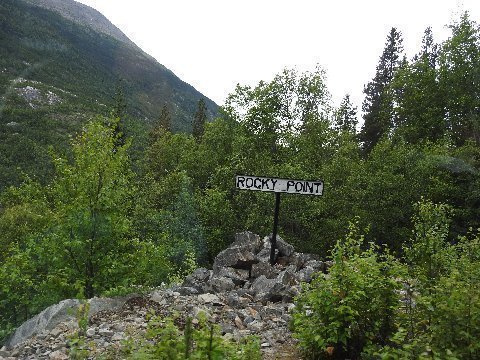 Rocky Point at Mile 6.9 – A great view down the Lower Valley showcasing Skagway, Mt Harding and Harding Glacier
Rocky Point at Mile 6.9 – A great view down the Lower Valley showcasing Skagway, Mt Harding and Harding Glacier

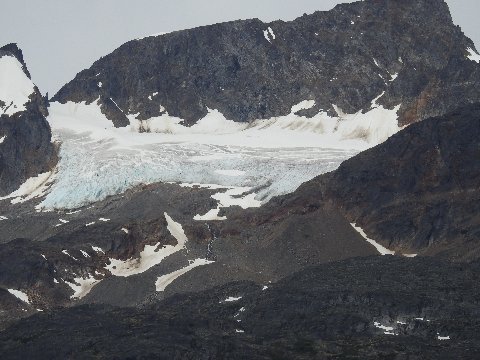 Harding Glacier
Harding Glacier
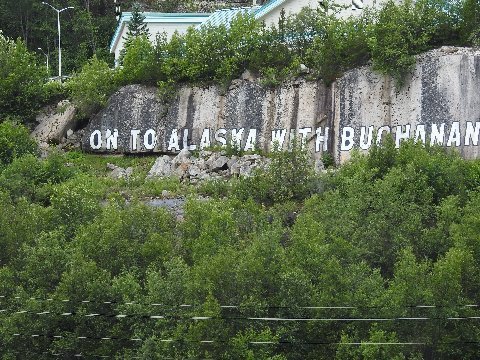 Buchanan Rock – the sign was painted by the Buchanan Boys Tour group to honor George Buchanan, a Detroit philanthropist who brought boys to Alaska each summer between 1920-1930
Buchanan Rock – the sign was painted by the Buchanan Boys Tour group to honor George Buchanan, a Detroit philanthropist who brought boys to Alaska each summer between 1920-1930
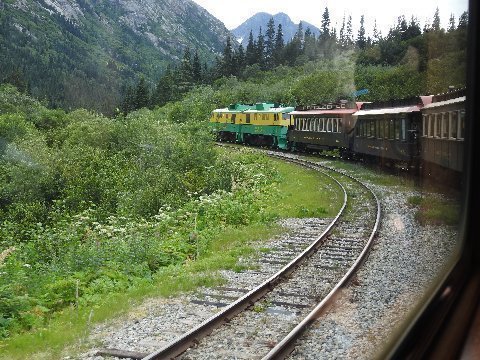
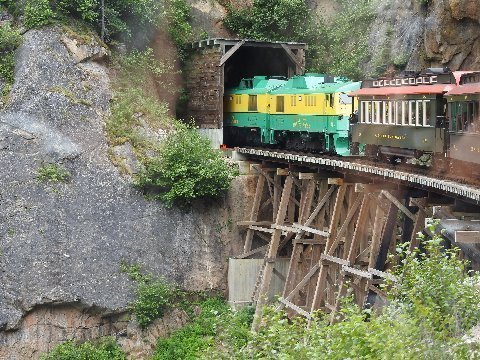
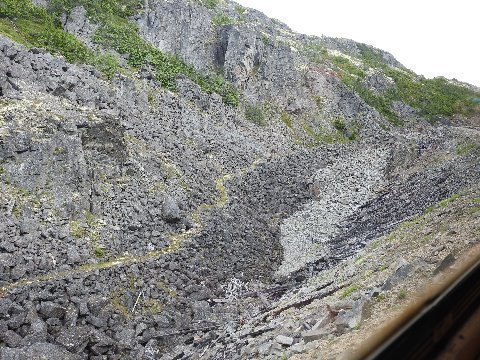 Views of the valley where miners trudged before the railway
Views of the valley where miners trudged before the railway
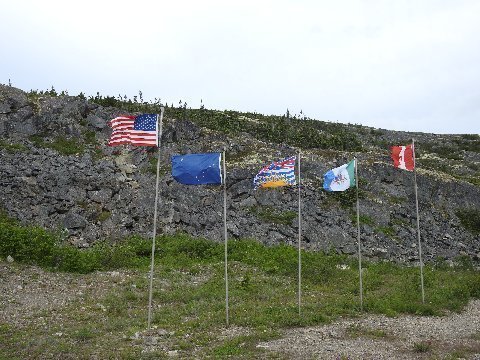 Flags at the border representing the US, Canada, Alaska, British Columbia and the Yukon
Flags at the border representing the US, Canada, Alaska, British Columbia and the Yukon
At the summit of 2885 feet, we stopped for a few minutes while the engine was moved to the opposite end of the train and then we began our descent, still enjoying the really good weather.

 At the beginning of the Denver Glacier Trail sits a donated caboose, which can be rented by the night
At the beginning of the Denver Glacier Trail sits a donated caboose, which can be rented by the night
Back down at sea level, we were deposited a few blocks from where we embarked. No surprise here, it was the equivalent of the gift shop except that it was an entire town (Skagway) that has been preserved as it was over 100 years ago. Although still containing a number of saloons and breweries, most buildings have been re-purposed as gift shops, art galleries, small museums, and restaurants. There are still the elevated wooden sidewalks, but now they bracket paved streets rather than dirt.
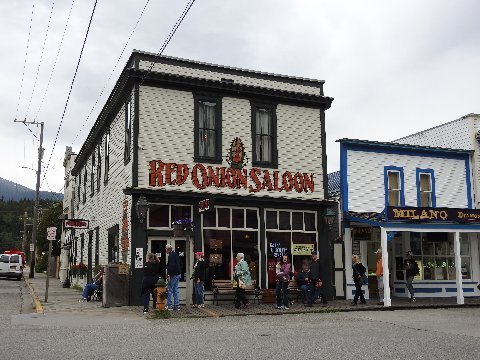
After quickly skimming through the gift shop at the railway station, we decided to walk back to the ferry dock where a recommended restaurant was located. It was only 11:45, but we hoped to beat the crowds.
Our return ferry didn’t depart until 2:00 pm, so we had some time to kill. The main street in Skagway is very long and we walked the entire distance, stopping only once for ice cream. Back to the ferry dock to meet up with the rest of our group, and soon we were on our way back to Haines.
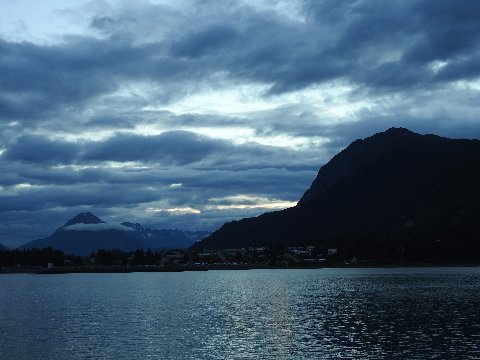 Evening Views of Skagway
Evening Views of Skagway
Ready to learn more?
Determine whether life aboard The World is the right fit for you. Talk to one of our Residential Advisors today to learn more about this unique lifestyle, details of upcoming Journeys and Expeditions, and ownership opportunities.



